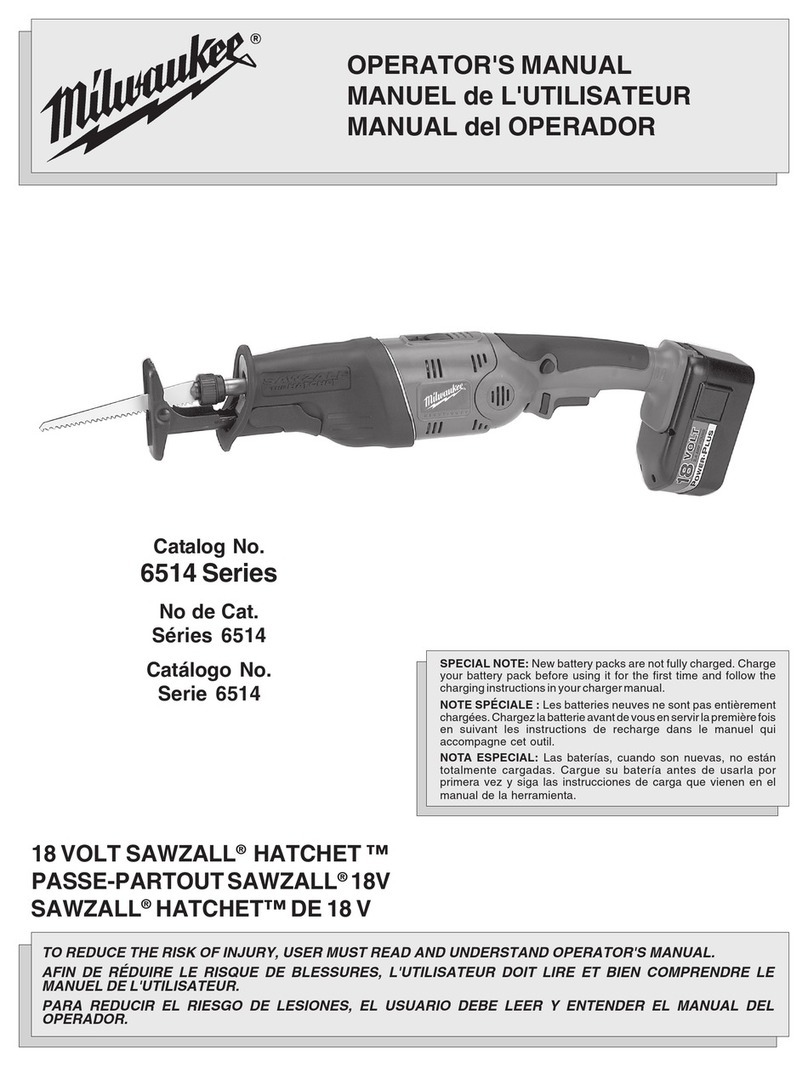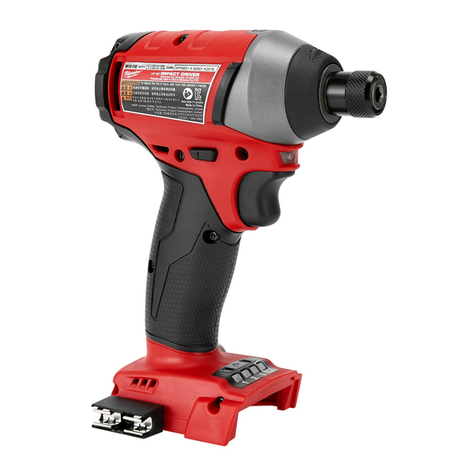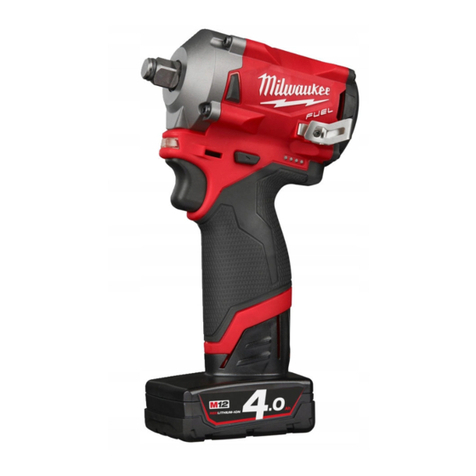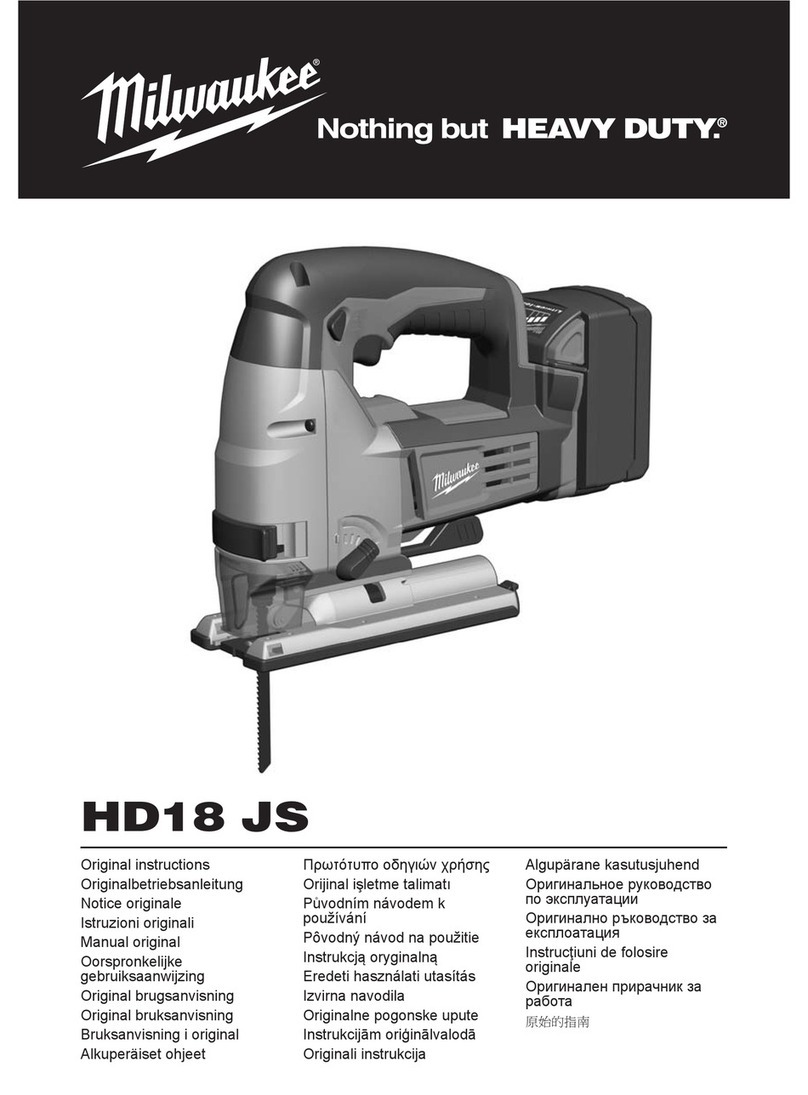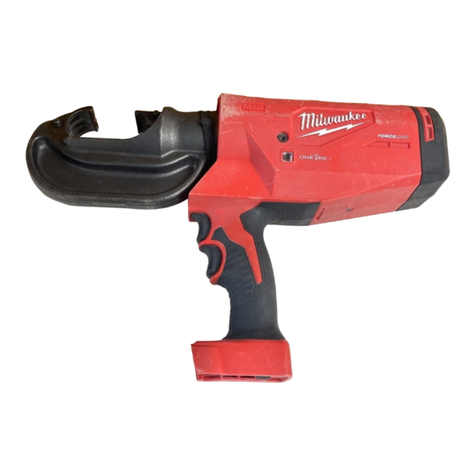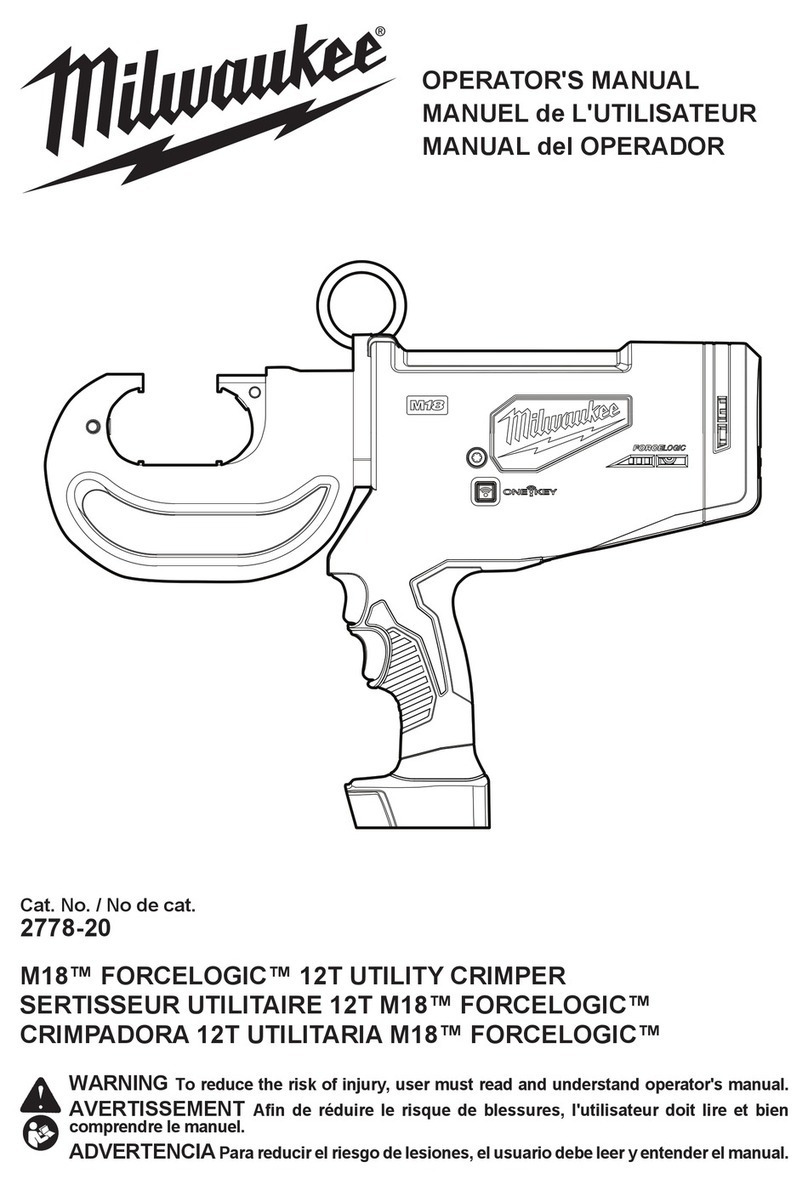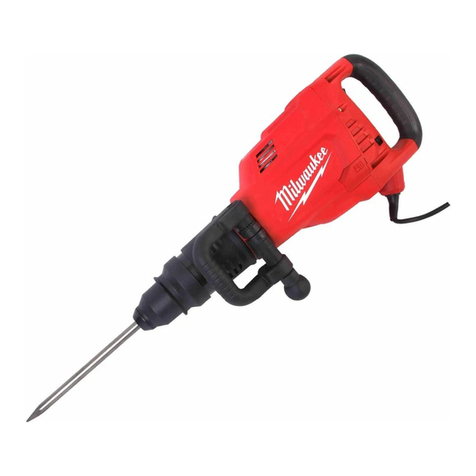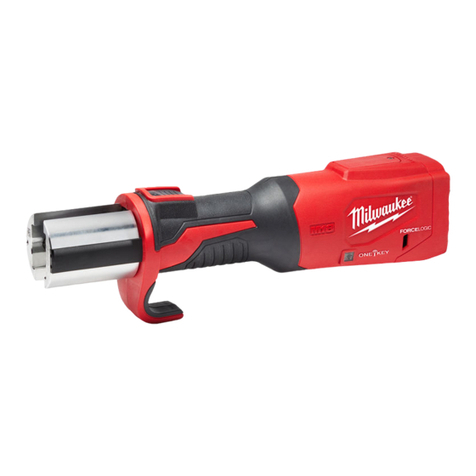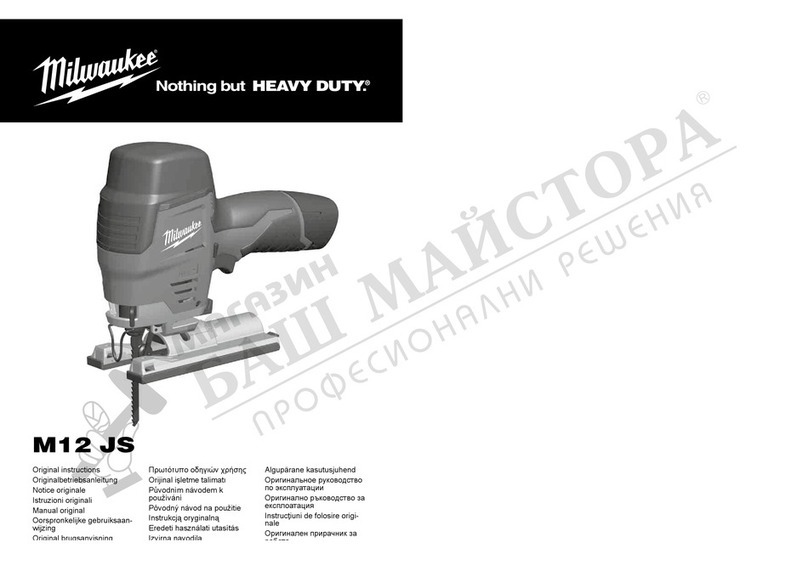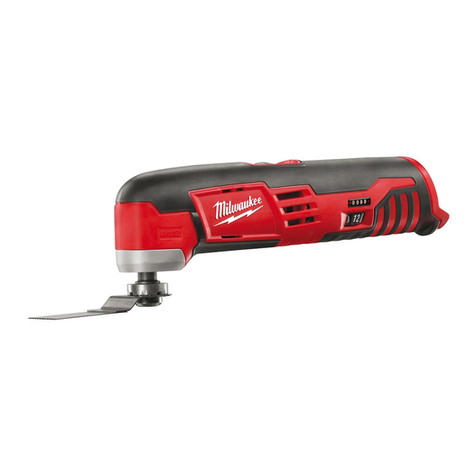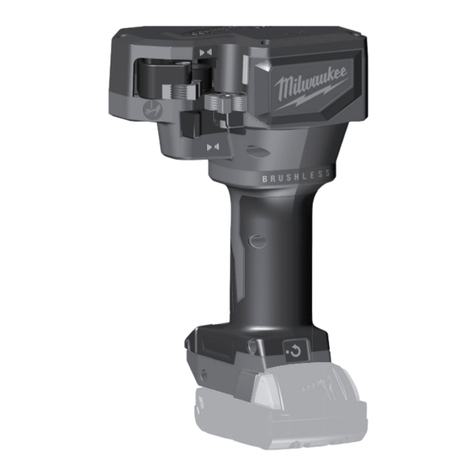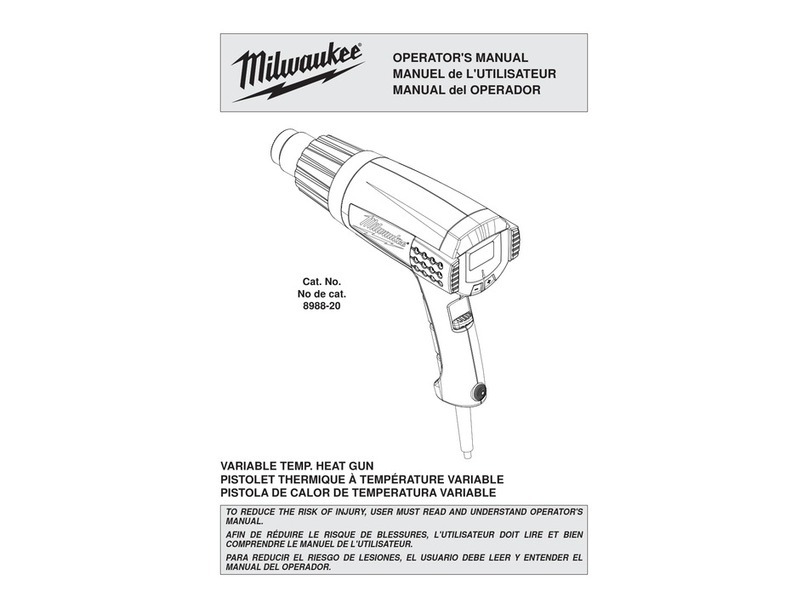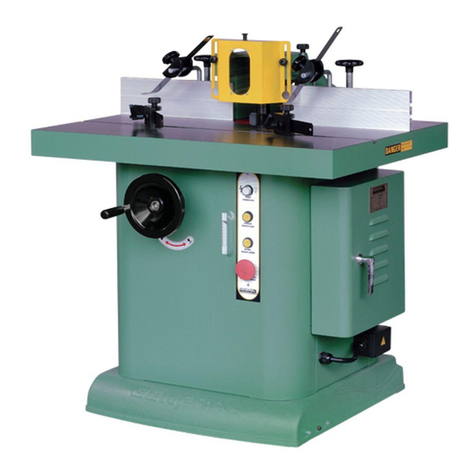
3
SERVICE
SPECIFIC SAFETY RULES
repair person using only identical replacement
parts. This will ensure that the safety of the power
tool is maintained.
•Never service damaged battery packs. Service
of battery packs should only be performed by the
manufacturer or authorised service providers.
•When battery pack is not in use, keep it away
from other metal objects, like paper clips, coins,
keys, nails, screws or other small metal objects,
that can make a connection from one terminal
to another. Shorting the battery terminals together
•Under abusive conditions, liquid may be ejected
from the battery; avoid contact. If contact ac-
cidentally occurs, flush with water. If liquid
contacts eyes, additionally seek medical help.
Liquid ejected from the battery may cause irritation
or burns.
•Follow all charging instructions and do not charge
the battery pack or tool outside the temperature
Charging
range may damage the battery and increase the risk
actuation, resulting in serious injury.
WARNING
•Always assume that the tool contains fasten-
ers. Careless handling of the stapler can result in
•Do not point the tool towards yourself or anyone
nearby. Unexpected triggering will discharge the
fastener causing an injury.
•Do not actuate the tool unless the tool is placed
If the tool is not in
contact with the workpiece, the fastener may be
GHÀHFWHGDZD\IURP\RXUWDUJHW
•Disconnect the tool from the power source when
the fastener jams in the tool. While removing
a jammed fastener, the tool may be accidentally
activated if it is plugged in.
•Use caution while removing a jammed fastener.
The mechanism may be under compression and the
fastener may be forcefully discharged while attempt-
ing to free a jammed condition.
•When fastening electrical cables, make sure the
cables are not energized. Hold the tacker only
by insulated gripping surfaces. Use only fasten-
ers designed for electrical cable installations.
Inspect that the fastener has not damaged the
insulation of the electrical cables. A fastener that
damages the insulation of electrical cables can lead
-
mended.
tool by the tool manufacturer may result in a risk of
injury to persons or damage to the tool.
•Prior to each use, check workpiece contact and
trigger for correct operation. Do not disassemble
or clamp parts of the workpiece contact, trigger, or
driving mechanism. This will cause unexpected
WARNING
Some dust created by power sanding,
•Do not engage in horseplay. The discharged
fasteners are projectiles capable of causing seri-
ous injury.
•Do not remove, tamper with, or otherwise cause
the tool operating controls to become inoper-
able. This will cause unexpected actuation, resulting
in serious injury.
•Do not operate a tool if any portion of the tool
operating controls is inoperable, disconnected,
altered, or not working properly. This will cause
unexpected actuation, resulting in serious injury.
•Always keep hands and body away from dis-
charge area of the tool. Never attempt to clear
a jammed workpiece contact by grasping the
discharge area of the tool. Fasteners discharged
from tool can cause serious injury if they contact
hands or body.
•Do not drive fasteners close to the edge of the
workpiece.
edges or penetrate through thin material, making
them projectiles capable of causing serious injury.
•Use the tool only for the intended purpose. Do
not abuse the tool. Do not use as a hammer, stamp
or engrave information onto parts, drop or impact
the tool or otherwise apply excess force to the tool
in use. Do not mount the tool to stands or modify it
for stationary use.
sawing, grinding, drilling, and other
construction activities contains chemicals known to
cause cancer, birth defects or other reproductive
harm. Some examples of these chemicals are:
•lead from lead-based paint
•crystalline silica from bricks and cement and other
masonry products, and
•arsenic and chromium from chemically-treated
lumber.
Your risk from these exposures varies, depending on
how often you do this type of work. To reduce your
exposure to these chemicals: work in a well ventilated
area, and work with approved safety equipment, such
as those dust masks that are specially designed to
•
•
Do not use a battery pack or tool that is
damaged or modified. Damaged or modified
batteries may exhibit unpredictable behaviour
resulting in fire, explosion or risk of injury.
Do not expose a battery pack or tool to fire or
excessive temperature. Exposure to fire or
temperature above 130°C (265°F) may cause
explosion.
•
•
Maintain labels and nameplates. These carry
important information. If unreadable or missing,
contact a MILWAUKEE®service facility for a
replacement.
•
This tool is intended to be used at ground level and
not on ladders or other unstable supports.
Always use common sense and be cautious
when using tools. It is not possible to anticipate
every situation that could result in a dangerous
outcome. Do not use this tool if you do not
understand these operating instructions or you feel
the work is beyond your capability; contact
MILWAUKEE®Tool or a trained professional for
additional information or training.
To reduce the risk of injury,
when working in dusty
situations, wear appropriate respiratory
protection or use a suitable dust extraction
solution.
